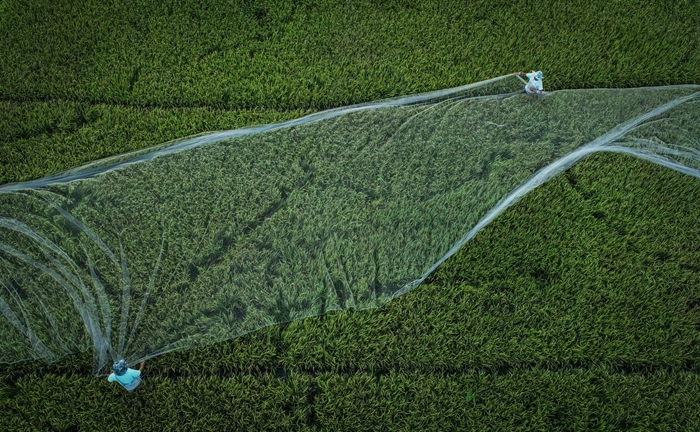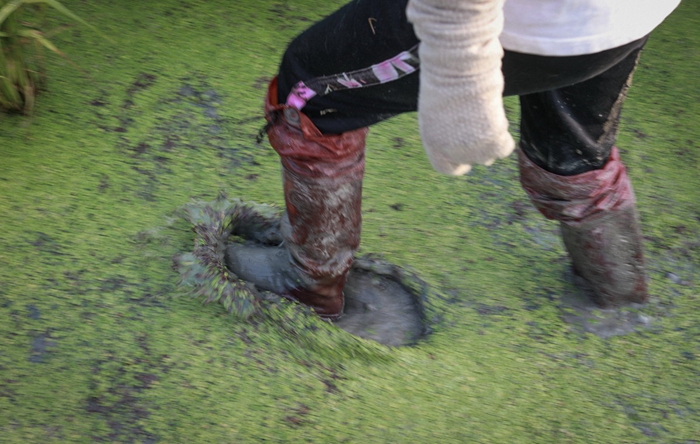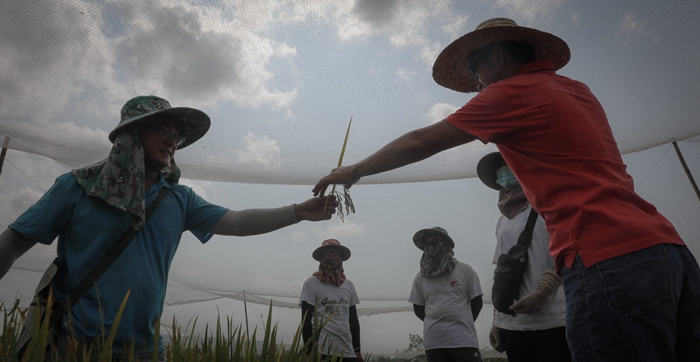Researchers breeding 'sea rice' to feed millions

Researchers cover their experimental paddy field with a protective net to prevent wild birds from feeding on grains at the Sanya Nanfan Scientific and Research Breeding Base in Sanya, Hainan province, on April 4. [Photo by Zhang Mao/for China Daily]
Hainan crop breeding base a mecca for scientists and agriculturalists
May is harvest season at the Qingdao Sea Rice Research and Development Center's experimental fields in Hainan province.
Zhang Shuyin, a researcher with the center, which is based in Qingdao in Shandong province, puts on his sun hat and goes to the paddy fields with a notebook and a big bag of water. He stays there the whole morning.
The center has several hectares of experimental fields at the Sanya Nanfan Scientific and Research Breeding Base, where about 2,000 samples of different rice varieties are being cultivated.
"Every day we grow rice, and we think about rice," Zhang said. "The seedlings have become like our children, and we can't leave them for a single day."
Sea rice is not actually grown in the sea, it's rice that is salt-tolerant. This means rice that can still grow in soils with salt densities greater than 0.3 percent.

Researcher Yu Meng walks in the muddy fields. [Photo by Zhang Mao/for China Daily]
"Humans have always worked hard to adapt to harsh environments," Zhang said. "Planting salt-tolerant rice on saline land is one of those attempts."
He said that being able to grow rice on about 7 million hectares of saline and alkaline land, with yields of around 4,500 kilograms per hectare, could help feed about 80 million people.
At the Nanfan base, Zhang and his five colleagues check on growth every day, collect samples for crossbreeding and thresh harvested rice by hand. He said they often need to do a number of experiments to develop a stable variety.
The Qingdao center was founded in 2016 by Yuan Longping (1930-2021), the late "father of hybrid rice". Since then, Zhang and his colleagues have come to the Nanfan base each autumn and stay until May. Then, they go home to continue their research.
According to Zhang, the Nanfan base is a mecca for the country's agriculturists and has attracted 8,000 scientists and workers from 700 research institutions and universities over the years.
Nearly 70 percent of the country's new crop varieties have been bred at Nanfan.

Researcher Gu Xiaozhen (left) and his colleague Yang Hanshu check the condition of an ear of rice in the field on April 6. [Photo by Zhang Mao/for China Daily]






